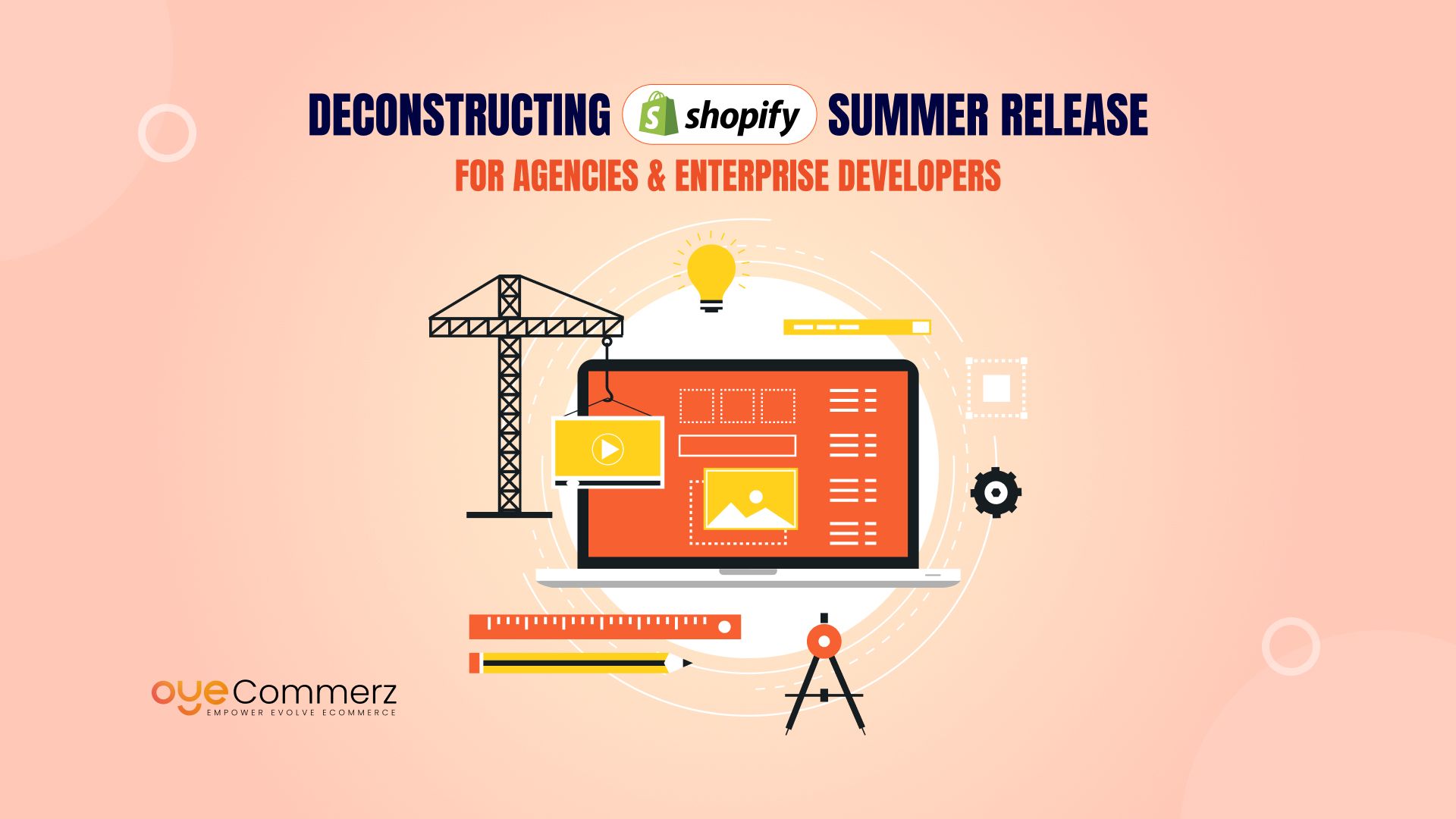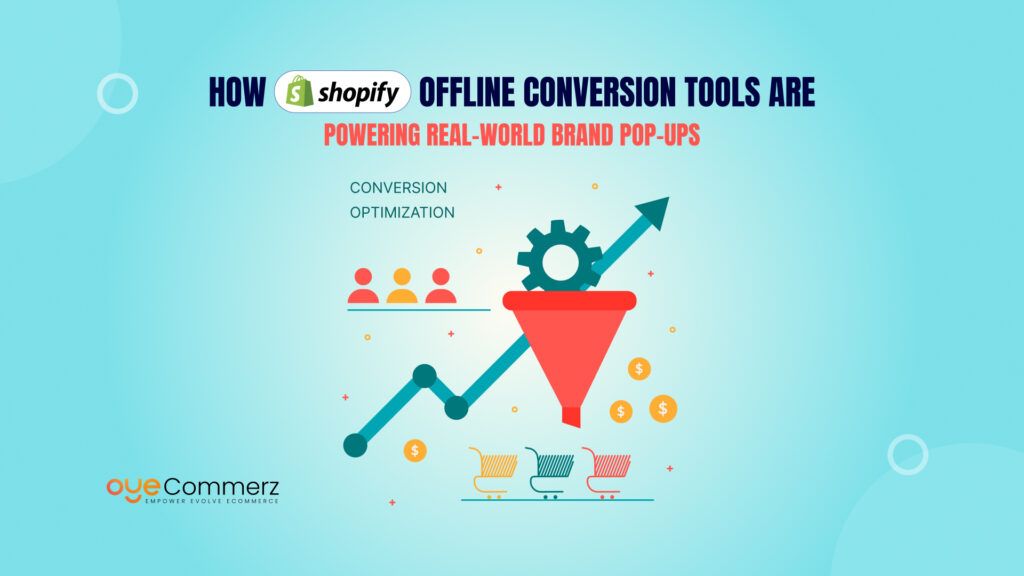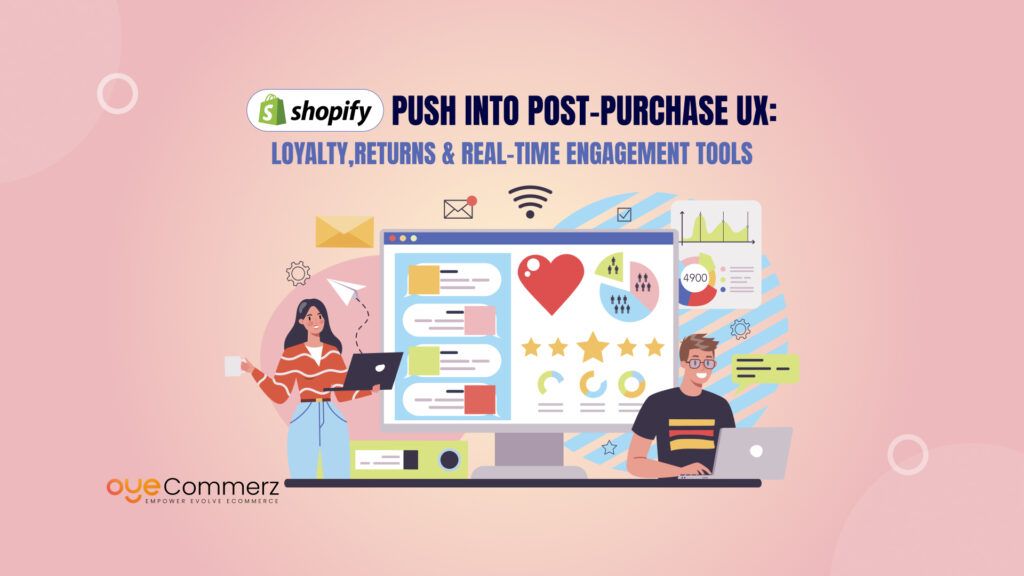In today’s hyper-competitive e-commerce landscape, the transaction isn’t the end of the journey—it’s just the beginning. According to Salesforce, over 70% of customers say that a positive post-purchase experience significantly influences their decision to buy from the same brand again. Yet, many online retailers still pour their time and budget into pre-purchase optimizations while neglecting what truly builds long-term customer loyalty: the post-purchase UX.
When brands fail to deliver a seamless and thoughtful experience after the checkout—such as clear shipping updates, easy returns, and meaningful follow-ups—they risk customer dissatisfaction, lost referrals, and reduced lifetime value. In short, they’re missing the opportunity to turn one-time buyers into repeat, loyal advocates.
Enter Shopify. The platform is doubling down on post-purchase UX, rolling out new tools that help merchants boost loyalty, streamline returns, and engage customers in real-time. Whether you’re a startup looking for a scalable e-commerce foundation or an established brand migrating from another platform, understanding this shift in customer experience is critical to staying competitive—and profitable.
Table of Contents
ToggleWhat is Post-Purchase UX? (Beginner Friendly)
Post-Purchase UX, or post-purchase user experience, refers to everything a customer encounters after they click “Buy Now.” It includes order confirmations, shipping updates, returns, follow-up emails, review requests, and loyalty rewards—essentially, all the interactions that happen once the transaction is complete.
For many first-time e-commerce store owners, it’s easy to assume that the hard work ends with the sale. But in reality, what happens after the sale can make or break a customer’s impression of your brand. A smooth return process, proactive communication, and personalized follow-ups can transform a single order into a lifelong customer relationship.
Think about your own experience: Would you return to a store that ignored your support requests after delivery? Or one that made returning a damaged item feel like a burden? The answer is likely no—and your customers feel the same.
Post-purchase UX is no longer just a “nice to have.” It’s a strategic growth driver that builds trust, boosts retention, and separates modern e-commerce brands from those stuck in the past. Shopify recognizes this and is building features that make the post-purchase journey not only seamless—but revenue-generating.
Shopify’s Strategic Focus on Post-Purchase Experience
Shopify isn’t just optimizing the shopping cart anymore—it’s investing heavily in what happens after the sale. The company recognizes that Post-Purchase UX is no longer a back-office function; it’s a critical part of brand loyalty, customer satisfaction, and long-term revenue growth.
Recent platform updates and app integrations show Shopify’s clear focus on strengthening the post-purchase journey:
- Shopify Flow helps merchants automate actions based on post-purchase triggers, such as sending loyalty offers after a second purchase or initiating follow-up emails based on delivery status.
- Shopify Audiences enables targeted post-purchase remarketing, helping businesses re-engage buyers who are most likely to return.
- Shopify Inbox brings real-time conversations directly into the post-purchase window, allowing for live support, upsell offers, and issue resolution—all within one thread.
Beyond native features, Shopify has fostered a robust app ecosystem that connects merchants with best-in-class tools for returns, loyalty, and post-sale engagement. Integrations with platforms like Loop Returns, Yotpo, Klaviyo, and Gorgias empower stores to build customized and scalable post-purchase workflows.
This shift reflects Shopify’s understanding of evolving consumer expectations. Customers don’t just want fast shipping—they want transparency, flexibility, and meaningful engagement. By focusing on Post-Purchase UX, Shopify helps merchants deliver the kind of experience that earns loyalty, reduces churn, and increases customer lifetime value.
The result? A platform that goes beyond the transaction and supports the full customer journey—from first click to repeat sale.
Breaking It Down: The 3 Pillars of Post-Purchase Innovation
Shopify’s approach to Post-Purchase UX is centered around three strategic areas: loyalty, returns, and real-time engagement. These pillars are designed to help merchants create consistent, branded, and friction-free experiences after checkout—turning one-time buyers into long-term customers.
1. Loyalty Programs That Build Repeat Business
Customer acquisition costs are rising, but keeping existing customers is far more cost-effective—and more profitable. Shopify enables merchants to launch and manage loyalty programs that reward repeat purchases, referrals, and even social interactions.
- Seamless integrations with platforms like Smile.io, LoyaltyLion, and Rise.ai allow for point-based systems, tiered rewards, and personalized incentives.
- Automation through Shopify Flow means rewards can be triggered based on purchase history, total spend, or product categories.
These loyalty tools help brands differentiate themselves in crowded markets and offer customers a reason to return—beyond price.
2. Smarter, Frictionless Returns
Returns are often treated as a cost center, but a well-designed return experience builds trust and improves customer satisfaction. Shopify’s ecosystem includes apps and workflows that make returns feel effortless—for both merchants and shoppers.
- Loop Returns and similar tools integrate directly with Shopify, offering branded returns portals, automated label generation, and flexible refund options.
- Merchants can set rules for instant store credit, exchanges, or returns to reduce churn and increase conversion on future purchases.
In a landscape where return policies are a deciding factor, smart return flows are a must-have component of Post-Purchase UX.
3. Real-Time Engagement that Strengthens Relationships
Customers want to know what’s happening with their order—and they want it now. Shopify’s tools support instant, real-time communication to keep customers informed, reassured, and engaged post-purchase.
- Shopify Inbox enables live chat and messaging integrations with SMS, Facebook Messenger, and email—all in one platform.
- Gorgias and Re:amaze provide unified customer service portals, allowing fast resolution of shipping issues, returns, and support inquiries.
This level of engagement not only enhances transparency but also opens opportunities for upselling, review requests, and relationship building—right when customer attention is at its highest.
Together, these three pillars redefine what merchants can do after the sale. With Shopify, Post-Purchase UX isn’t an afterthought—it’s a competitive advantage.
Shopify vs. Other Platforms: Who’s Winning in Post-Purchase UX?
When it comes to delivering a seamless Post-Purchase UX, not all e-commerce platforms are created equal. While some focus heavily on cart functionality or product display, Shopify stands out by prioritizing what happens after the transaction—where customer loyalty is earned and long-term revenue is built.
Below is a side-by-side comparison of how leading platforms perform in key areas of the post-purchase journey
For New E-Commerce Entrepreneurs: Why Post-Purchase UX Matters from Day One
If you’re launching your first online store, your instinct might be to concentrate solely on product listings, a great-looking website, and generating initial traffic. While these are essential, there’s a critical part of the customer journey that often gets overlooked—Post-Purchase UX.
Post-Purchase UX refers to everything your customer experiences after clicking the “Buy Now” button. That includes order confirmations, tracking updates, return processes, customer support, follow-up emails, loyalty rewards, and more. These aren’t just operational tasks—they’re powerful brand-building moments.
Why should first-time store owners prioritize this?
- Customer Expectations Are Higher Than Ever
Modern shoppers expect real-time updates, fast communication, and hassle-free returns. If your store doesn’t meet those expectations, they’ll likely go elsewhere. - It Costs Less to Retain Than to Acquire
Acquiring a new customer can cost five times more than retaining an existing one. A great Post-Purchase UX keeps customers coming back—saving you marketing dollars in the long run. - Trust Is Built After the Transaction
First impressions matter, but loyalty is earned after the purchase. The way you handle issues like delays, returns, or questions will shape whether customers trust your brand or forget it. - Tools Are Now Easy to Use and Affordable
With Shopify, many post-purchase tools are plug-and-play. You don’t need to be a developer or hire an agency to implement features like automated updates, review requests, or loyalty rewards.
For new entrepreneurs, mastering Post-Purchase UX early means fewer customer complaints, better reviews, and a stronger foundation for growth. It’s not just about making a sale—it’s about building a business that customers come back to.
Technical Deep Dive: How to Leverage Shopify’s Post-Purchase UX Stack
For businesses ready to scale or developers supporting growth-driven brands, Shopify offers a robust and flexible framework to build a high-performance Post-Purchase UX. Whether you’re integrating third-party apps or customizing workflows, Shopify ecosystem gives you the tools to optimize every post-sale interaction.
Key Tools and Technologies Behind Shopify’s Post-Purchase UX
1. Shopify Flow
- Use Case: Automate post-purchase tasks like sending loyalty points, notifying support teams, or segmenting customers based on order value.
- How it Works: Drag-and-drop interface using logic triggers and conditions. No coding required, but supports complex branching.
- Popular Workflows:
- Trigger an email when a high-value customer places an order.
- Tag customers for loyalty programs after their second purchase.
- Auto-create support tickets for orders with delayed fulfillment.
- Trigger an email when a high-value customer places an order.
2. Shopify Admin and Storefront APIs
- Use Case: Extend post-purchase features beyond the dashboard.
- Admin API: Retrieve order status, update fulfillment records, manage customer tags for segmentation.
- Storefront API: Customize customer account experiences, show dynamic loyalty rewards, and embed real-time order updates.
3. Checkout Extensions (Post-Purchase Pages)
- Use Case: Add post-purchase offers, surveys, or additional product recommendations after checkout but before confirmation.
- Example: Offer a 15% discount on a related product immediately after purchase to increase average order value.
4. App Integrations
- Returns: Loop Returns, Returnly
- Loyalty: Smile.io, LoyaltyLion, Rise.ai
- Engagement & Support: Klaviyo, Gorgias, Re:amaze
- Tracking & Notifications: AfterShip, Route
These apps are built to integrate seamlessly with Shopify’s core platform, and most require minimal setup to get started. Many also support API-level customization for deeper functionality.
Optimization Tips for Developers and Merchants
- Use tags and metafields to personalize post-purchase messaging and loyalty offers.
- Track post-purchase behavior (such as product reviews or return frequency) to inform future marketing campaigns.
- Monitor app performance regularly to ensure they do not slow down the storefront or disrupt order processing.
With the right mix of automation, personalization, and tool integration, Shopify empowers brands to build a Post-Purchase UX that is efficient, scalable, and deeply customer-focused.
Contact to Migrate your Site to Shopify Now
Migrating to Shopify? Let Oyecommerz Elevate Your Post-Purchase UX
If your current e-commerce platform is holding you back from delivering a seamless Post-Purchase UX, it may be time to consider migrating to Shopify—and Oyecommerz can help you make that move with confidence.
At Oyecommerz, we specialize in end-to-end Shopify migration services for growing brands that want to modernize their customer experience. Whether you’re moving from Magento, WooCommerce, BigCommerce, or Squarespace, our expert team ensures a smooth, lossless transition with zero compromise on performance, design, or data integrity.
Why Choose Oyecommerz?
- Customized Migration Plans
We tailor your migration to support advanced post-purchase features like loyalty programs, real-time engagement tools, automated return flows, and dynamic customer segmentation. - Post-Migration Optimization
We don’t just move your store—we optimize it. Our team ensures your Shopify store is configured to support a best-in-class Post-Purchase UX using tools like Shopify Flow, Klaviyo, Loop Returns, and Smile.io. - US-Focused Strategy
We understand the behavior and expectations of the US e-commerce market. Every Shopify setup we deliver is built to compete and convert in one of the world’s most demanding online retail environments. - Ongoing Support
Post-launch, we offer full support and Shopify maintenance services to ensure your store runs smoothly and continues to evolve as customer expectations change.
If you’re serious about scaling your business and delivering the kind of post-sale experience that builds lasting loyalty, now is the time to upgrade. Partner with Oyecommerz and give your customers the post-purchase journey they deserve.
Conclusion
In today’s e-commerce landscape, winning customers means more than just making a sale—it means delivering an exceptional Post-Purchase UX that keeps them coming back. From loyalty programs and streamlined returns to real-time engagement, every interaction after checkout is an opportunity to build trust, increase satisfaction, and drive long-term growth.
Shopify’s commitment to enhancing post-purchase experiences empowers merchants with the tools and flexibility needed to meet rising customer expectations. Whether you’re new to e-commerce or looking to migrate from another platform, investing in your Post-Purchase UX is essential to staying competitive in the US market.
Partnering with experts like Oyecommerz ensures that your Shopify migration and setup maximize these benefits, helping you create a seamless, scalable, and profitable customer journey.
Start focusing on what happens after the sale—because that’s where true customer loyalty begins.




